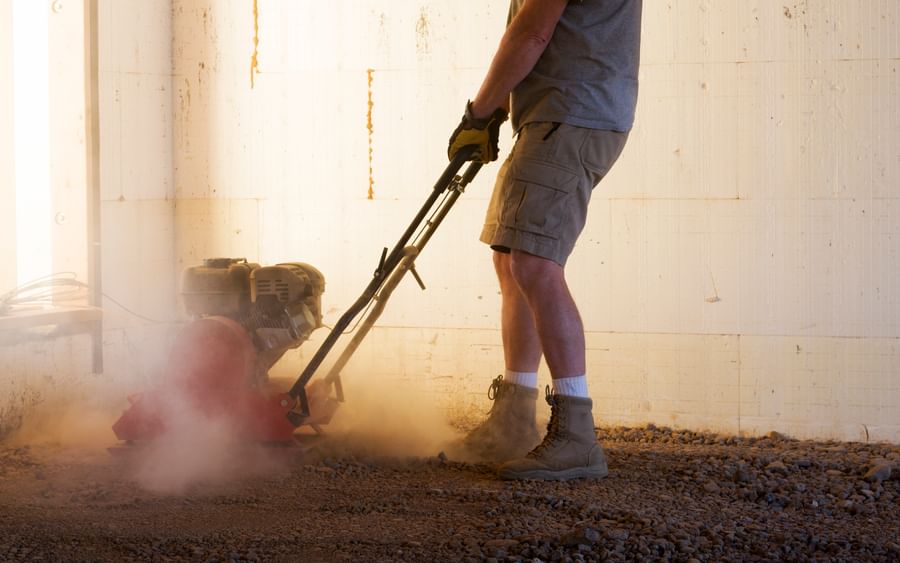Common workplace and environmental carcinogens
There are 210 known and probable cancer-causing agents and circumstances. Exposure to a number of these agents primarily occurs within the workplace.
Solar ultraviolet (UV) radiation
UV radiation is a high-energy part of the electromagnetic spectrum emitted from the sun. The sun is a major source of UV radiation, but it can also come from artificial sources such as arc welders, glue curing lights, and tanning beds or sun lamps.
Exposure to UV radiation causes over 95 per cent of skin cancers. Sunburn or a tan is a sign of skin being damaged by overexposure to harmful UV radiation.
Silica
Silica is a naturally occurring mineral found in some artificial stone, bricks, tiles, concrete and some plastic material.
Blasting, cutting, chipping, drilling and grinding materials that contain silica can result in silica dust, which is harmful to be inhaled into your lungs. This can lead to the development of lung cancer, silicosis, kidney disease and chronic obstructive pulmonary disease.
It is estimated that 230 people develop lung cancer each year as a result of past exposure to silica dust at work due to long-term or repeated high-level exposure to silica dust.
Diesel engine exhaust
Diesel engine exhaust (DEE) is created by burning diesel fuels. It contains a mixture of gases and soot that cancer-causing agents (carcinogens) may stick to. The chemicals in DEE increase your risk of developing long-term health problems, including lung cancer and possibly bladder cancer.
Second-hand smoke
Second-hand smoke (or environmental tobacco smoke) is the combination of side-stream smoke (smoke released from the tip of the cigarette) and mainstream smoke (smoke exhaled by the smoker). Passive-smoking is the inhalation of second-hand smoke.
Second-hand smoke is a carcinogen which contains around 7,000 chemicals, 69 of which are known to cause cancer.
Wood dust
When wood products are worked on, dust and formaldehyde are released into the air. Prolonged exposure and inhalation of these products may cause cancer of the nasal cavity, sinuses and nasopharynx, as well as leukaemia.
Asbestos
Being exposed to asbestos increases the risk of developing cancers of the lung, ovary and larynx as well as mesothelioma (cancer of the lining of the lung). These cancers often develop decades after exposure to asbestos.
While asbestos has been banned in Australia for over 20 years, asbestos still remains in many homes, particularly those built before 1990.
Welding
Welding activities produce many hazards through the production of contaminants in welding fumes, which can increase your risk of developing lung cancer, and UV radiation, which can cause melanoma of the eye.
Other common workplace and environmental carcinogens
- Benzene – This is found in crude oil and is a major part of petrol. It is used to produce plastics, resins, synthetic fibres, rubber lubricants, dues, detergents, drugs and pesticides.
- Lead
- Artificial UV radiation
- Polycyclic aromatic hydrocarbons (PAHs) – Organic chemicals released from burning organic substances such as coal, oil and petrol.
- Chromium VI – Exposure can occur during activities such as welding on stainless steel and other alloy steels containing chromium.
For more information about workplace and environmental carcinogens visit Cancer Council Australia’s website.
How can our workplace reduce the risk of occupational and workplace cancers?
The best way to reduce cancer risk at work is to implement control measures for carcinogenic hazards. Safe work practices should always be outlined and followed in the workplace.
Cancer Council Australia has developed fact sheets and other resources that provide information on various occupation carcinogens, how you can control them, legal obligations and where you can go for further information.
Get support
If you are concerned about possible cancer-causing agents in your workplace, please contact our experienced cancer prevention team at prevention@cancersa.org.au.



